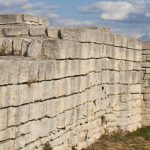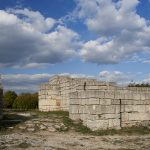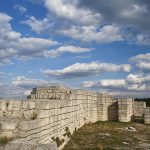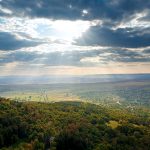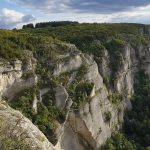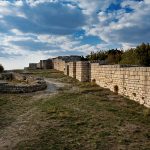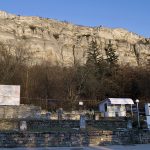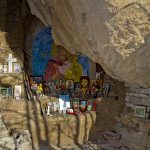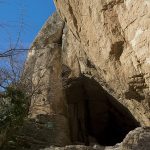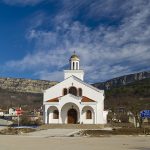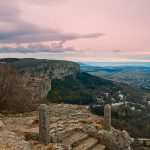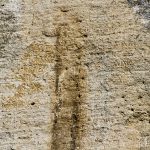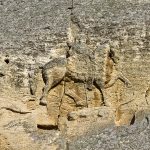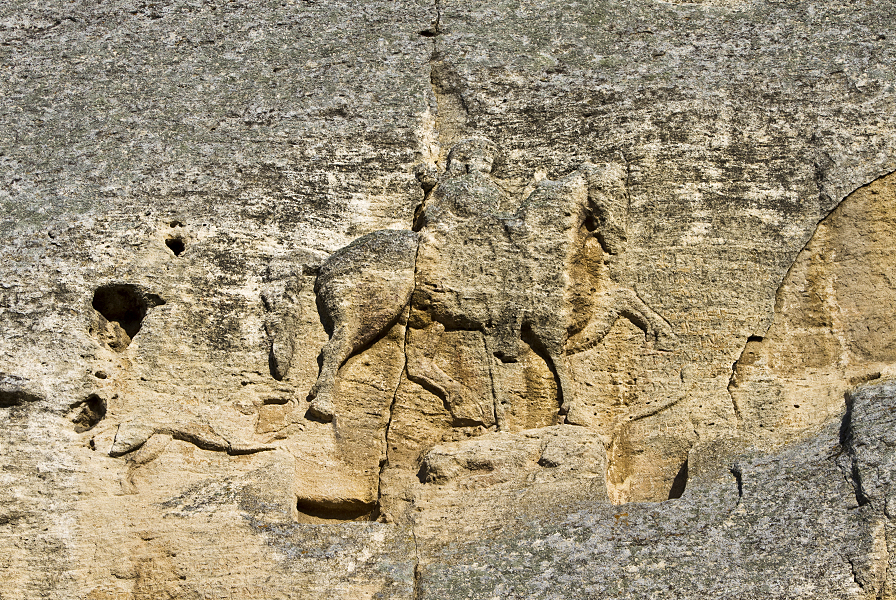
Madara – National Historical-Archeological Reserve

The national historical-archeological reserve “Madara” is located 17 km northeast of Shumen, 2 km from the village of Madara and 75 km from Varna.
Towering cliffs, beautiful natural surroundings, and plentiful water drew people here from the dawn of history.
First settled during the Neolithic Age (the late Stone Age), it has been occupied ever since. Over the centuries, rock sanctuaries were founded here, as were palaces and other habitations, fortresses, temples, hermits’ retreats and monastic complexes, places for solitude and for communal celebrations.
Visitors can observe evidence of the material and spiritual cultural development of many ethnic groups – the earliest inhabitants, Thracians, Romans, Byzantines, Slavs, Bulgars, Turks, and others. Today dozens of monuments and artifacts from all epochs can be seen.
There are a number of hypotheses relating to the origin of the name Madara. Some historians think that it is connected to the ancient Greek epithet “madaros” which meant “naked”, “bald-headed”, or “treeless”. Others attribute an Old Bulgarian origin to the name, in which case it could mean Holy Cliff or Holy Place.
The first studies of Madara’s ancient history were completed in the 1930s, when two burial mounds were excavated on the plateau. An inventory of the gravesites yielded information about trade relations between the resident Thracians and Greek colonies situated in Asia Minor and along the neighboring Black Sea coast.
The Thracians had long used the caves as dwellings, and like their predecessors – the first inhabitants of the region – they enlarged them and made them more comfortable.
The ancient history of Madara is marked by a dominant Roman presence. The most impressive architectural monument is a Roman villa (the Villa Rustica), occupied between the 2nd and 4th centuries, comprised of a walled complex of buildings characteristic of rural villas in the European provinces of the Roman Empire. Most likely it was owned by a wealthy slaveowner.
During late Antiquity (around the 4th century), a fortress was erected on the Madara plateau, rebuilt from time to time and functioning until the Ottoman invasion during the 14th century.
Madara was a vital location during the Middle Ages – as the site of important historical gatherings connected with the founding of the Bulgarian State (7th century) and because of its proximity to the first capitals, Pliska and Preslav.
The name Madara is first encountered in 1388 in connection with its conquest by the Ottomans.
The most notable monument at the Madara reserve is the unique stone relief known as the Madara Horseman.
Carved on a massive cliff some 23 meters high, it is representative of early Medieval Bulgarian artistry.
The relief depicts a horseman in a natural pose with a sword in his hand. At the feet of the horse is a lion, and behind the rider is depicted his hunting dog. One legend has it that a Roman emperor was hunting on the plateau when he fell off the cliff and died. His relatives memorialized him by engaging a master to carve his image on the cliff.
Scholarly conjecture has associated the relief with Khan Krum (reign 803 – 814), Tervel (reign 701 – 718), Asparukh (reign 681 – 701), and even with the god Tangra (the supreme deity of the proto-Bulgarians).
The stone relief is the only one of its kind in Europe. In 1979, it was included on the list of UNESCO World Heritage Sites, and in 2008 it was chosen as the national symbol of Bulgaria.
In the 14th century one of the largest cliff monasteries in Bulgaria was founded at Madara. More than 150 natural caves on the rock face were used as churches, chapels, monastic retreats, and gravesites. One of the largest caves was used as a church, and it continues to function to this day as the cliffside chapel “Saint Panteleymon”.
After Bulgaria fell to the Turks (at the end of the 14th century), Madara lost its identity as a unique cultural, cultic, and administrative center of national importance. By the 16th century the brilliant palaces and monuments from antiquity and the Middle Ages were razed to their foundations. The only monument to survive was the Madara Horseman.
At the Madara reserve there is now an archeological museum that presents the history of the site during epochs of human habitation there. The museum opened in 1935. The exposition includes more than 350 original finds from the Madara region.
“Madara” was recognized as a national reserve by Decree 161 on 05.08.1958. At present the site is under the supervision of the regional historical museum in Shumen.
The reserve includes all area protected as part of the Madara cliffs site, which covers an area of 3,691,336 hectares. It is recognized as a protected environment for all petrified remains and rare animal species.
The site is provided with parking facilities, toilets, and access for people with limited mobility, and it has a pavilion open to the public that sells informative materials and souvenirs.
More than 30 signs giving directions and explanations, along with tablets located at excavated sites within the reserve, provide useful information for tourists.
Pleasant eco-trails marked with informative signs direct visitors throughout the reserve.
Shumen, 9971, Bulgaria.

